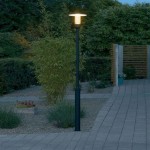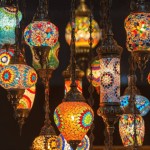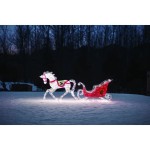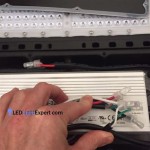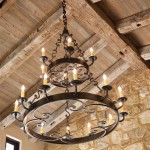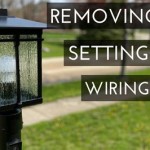Outdoor Ceiling Fan Light Fixtures: Illuminating and Ventilating Your Exterior Spaces
Outdoor ceiling fan light fixtures represent a practical and aesthetically pleasing solution for enhancing patios, porches, decks, and other covered outdoor areas. Combining the functionalities of cooling air circulation and ambient lighting, these fixtures contribute to a more comfortable and inviting outdoor environment. Understanding the key aspects of outdoor ceiling fan light fixtures, including their selection, installation, and maintenance, is crucial for maximizing their benefits and ensuring long-term performance.
Key Considerations for Selecting an Outdoor Ceiling Fan Light Fixture
Choosing the appropriate outdoor ceiling fan light fixture hinges on several factors, primarily related to the intended application, environmental conditions, and desired aesthetic. Addressing these factors proactively will contribute to a purchase that meets both functional and visual requirements.
Location and Size: The physical dimensions of the outdoor space significantly influence the appropriate size of the fan. For smaller patios or porches, a smaller fan with a blade span of 44 inches or less may be sufficient. Larger areas, such as covered decks or pavilions, generally necessitate larger fans with blade spans ranging from 52 to 60 inches or even larger for optimal air circulation. The height of the ceiling also needs consideration; if the ceiling is low, a flush mount fan or one with a short downrod should be selected to maintain adequate headroom. Furthermore, the location's exposure to the elements will dictate the types of materials you look for in a fan. Fully exposed locations can require fans with wet ratings, while fans in areas that are only partially covered can use damp-rated fixtures.
UL Rating: Underwriters Laboratories (UL) provides safety certifications for electrical products, including ceiling fans. For outdoor use, it is imperative to choose a fan with either a "damp-rated" or "wet-rated" UL listing. Damp-rated fans are designed for covered outdoor areas where they are protected from direct rain and snow but may be exposed to moisture and humidity. Wet-rated fans are constructed to withstand direct exposure to rain, snow, and other harsh weather conditions. Selecting the appropriate UL rating ensures the fan's electrical components are adequately protected, minimizing the risk of electrical hazards and prolonging the fixture's lifespan. If a location gets any direct rain contact at all, a wet rated fan is the only plausible option.
Materials: The materials used in the construction of an outdoor ceiling fan light fixture impact its durability and resistance to the elements. Blades are commonly made from plastic, metal, or wood. Plastic blades, particularly those made from acrylonitrile butadiene styrene (ABS), are lightweight, resistant to moisture, and easy to clean. Metal blades, often constructed from aluminum or stainless steel, offer enhanced durability and resistance to corrosion but can be heavier and more prone to noise. Wood blades provide a more traditional aesthetic but require regular sealing and maintenance to prevent warping or rot. The motor housing should be constructed from corrosion-resistant materials such as powder-coated aluminum or stainless steel. These materials provide better protection against rust and degradation compared to painted steel or other less durable options.
Lighting Options: Outdoor ceiling fan light fixtures offer a variety of lighting options, ranging from integrated LED modules to traditional incandescent or halogen bulbs. LED lighting is generally preferred for its energy efficiency, long lifespan, and cooler operating temperature. Integrated LED modules are often more streamlined and offer a more modern aesthetic, while fixtures designed for replaceable bulbs provide more flexibility in terms of light output and color temperature. Consider the desired level of illumination and the overall ambience of the outdoor space when selecting the lighting options.
Style: The aesthetic style of the outdoor ceiling fan should complement the architectural design of the home and the overall décor of the outdoor space. Options range from traditional and rustic to contemporary and minimalist. Consider the color, finish, and overall design of the fan and light fixture to ensure it integrates seamlessly with the existing environment. Common style elements include blade shapes, motor housing designs, and light fixture aesthetics.
The Process of Installing an Outdoor Ceiling Fan Light Fixture
Proper installation is paramount for ensuring the safe and reliable operation of an outdoor ceiling fan light fixture. It is strongly recommended to consult with a qualified electrician for installation, particularly if the project involves electrical wiring modifications. However, understanding the general installation steps can aid in planning and overseeing the process.
Safety Precautions: Prior to commencing any installation work, it is essential to disconnect the power supply to the electrical circuit at the breaker panel. This prevents accidental electrocution. Furthermore, wear appropriate safety gear, including eye protection and gloves. If working at heights, use a stable ladder or scaffolding and ensure that the work area is clear of obstructions.
Mounting Bracket Installation: The mounting bracket provides the structural support for the ceiling fan. Ensure that the bracket is securely attached to a structural member of the ceiling, such as a joist or beam. If a suitable structural member is not readily accessible, reinforcement may be necessary. Use appropriate hardware, such as lag screws or through bolts, to secure the bracket. The method of attachment depends on the existing structure of the ceiling and should be performed in accordance with local building codes.
Wiring Connections: Carefully follow the wiring diagram provided with the ceiling fan to connect the electrical wires. Typically, the wires are color-coded: black (hot), white (neutral), and green or bare copper (ground). Ensure that all wiring connections are secure and properly insulated using wire connectors. Incorrect wiring can result in electrical hazards or malfunctioning of the fan and light fixture. In many cases, the wiring of the fixture can be installed with common wire crimping tools, but it is recommended to consult a knowledgeable expert to ensure the task is performed safely and correctly.
Fan and Light Fixture Assembly: Assemble the fan and light fixture according to the manufacturer's instructions. This typically involves attaching the blades to the motor housing, installing the light fixture, and connecting the wiring. Ensure that all screws and fasteners are tightened securely. Loose components can cause noise and vibration during operation.
Testing and Adjustments: After installation, restore power to the circuit and test the fan and light fixture. Verify that the fan operates at all speed settings and that the light fixture functions properly. Adjust the blade balance if necessary to minimize wobble. Many fans come with balancing kits that include small weights which can be attached to the blades to correct any imbalances. These can make operating the fan much more efficient and quieter.
Maintaining Your Outdoor Ceiling Fan Light Fixture
Regular maintenance is essential for prolonging the lifespan and optimizing the performance of an outdoor ceiling fan light fixture. Simple maintenance tasks can prevent premature wear and tear and ensure continued functionality. Following a consistent maintenance schedule will mitigate potential problems and keep the fixture looking its best.
Cleaning: Periodically clean the blades, motor housing, and light fixture to remove dust, dirt, and debris. Use a soft cloth or brush and a mild detergent solution. Avoid using harsh chemicals or abrasive cleaners, as these can damage the finish. Regular cleaning prevents the build-up of contaminants that can affect the fan's performance and appearance. Dust can weigh the blades down and hinder the motor's ability to function properly.
Tightening Fasteners: Over time, screws and fasteners can loosen due to vibration. Periodically inspect and tighten all screws and fasteners, particularly those securing the blades to the motor housing. Loose screws can cause noise, vibration, and even blade detachment. Applying a thread locking compound, such as Loctite, can help prevent loosening.
Motor Lubrication: Some ceiling fan motors require periodic lubrication. Check the manufacturer's instructions to determine if lubrication is necessary and, if so, what type of lubricant to use. Apply lubricant sparingly and according to the instructions. Proper lubrication reduces friction and extends the lifespan of the motor. Some motors are permanently lubricated and do not require additional lubrication.
Blade Balancing: As discussed previously, blade imbalance can cause wobble and noise. If the fan exhibits these symptoms, use a balancing kit to adjust the blade weights. Follow the instructions provided with the kit to determine the appropriate placement of the weights. Balancing the blades ensures smooth and quiet operation.
Light Bulb Replacement: When light bulbs burn out, replace them with the appropriate type and wattage. Refer to the light fixture's specifications to ensure compatibility. Avoid using bulbs with higher wattage than recommended, as this can overheat the fixture and create a fire hazard. Consider using LED bulbs for their energy efficiency and long lifespan. LED bulbs are a cost-effective solution that require less frequent replacement.
By carefully considering the location, UL rating, materials, lighting options, and style, selecting the appropriate outdoor ceiling fan light fixture is possible. Additionally, following proper installation procedures and adhering to a regular maintenance schedule will further contribute to the fixture's longevity and optimal performance. Outdoor ceiling fan light fixtures are an investment that can improve both the comfort and aesthetics of exterior spaces.

Damp Outdoor Indoor 74 Dual Patio Ceiling Fan W Light Fixture Twin Wicker Leaf

Better Homes Gardens 56 Black Indoor Outdoor Ceiling Fan With 3 Blades Light Kit Pull Chains Reverse Airflow Com

Hampton Bay Cedar Lake 44 In Indoor Outdoor Led Matte Black Damp Rated Ceiling Fan With Light Kit Downrod And 4 Reversible Blades 52109 The Home Depot

Tropical Style Indoor Outdoor Ceiling Fan 44 In Palm Leaf Blades Bowl Light Kit 82392911447

Dinglilighting 26 Farmhouse Ceiling Fan With 6 Lights Industrial Indoor Outdoor Lighting Matte Black Flush Mount Cage Remote 3 Sd Timing Com

All About Ceiling Fan Light Kits Ideas Advice Lamps Plus

Westinghouse Lighting Oasis 48 Inch Five Blade Indoor Outdoor Ceiling Fan Oil Rubbed Broe Finish

Donaire Ceiling Fan For Balcony Terrace Verandah Outdoor Spaces Casa Bruno Fans Furniture Ventiladores Mallorca 749 00

Pin On Farm House

Outdoor Nautical Ceiling Fan Lantern Light 155 Dan S City Fans Parts Accessories
Related Posts


